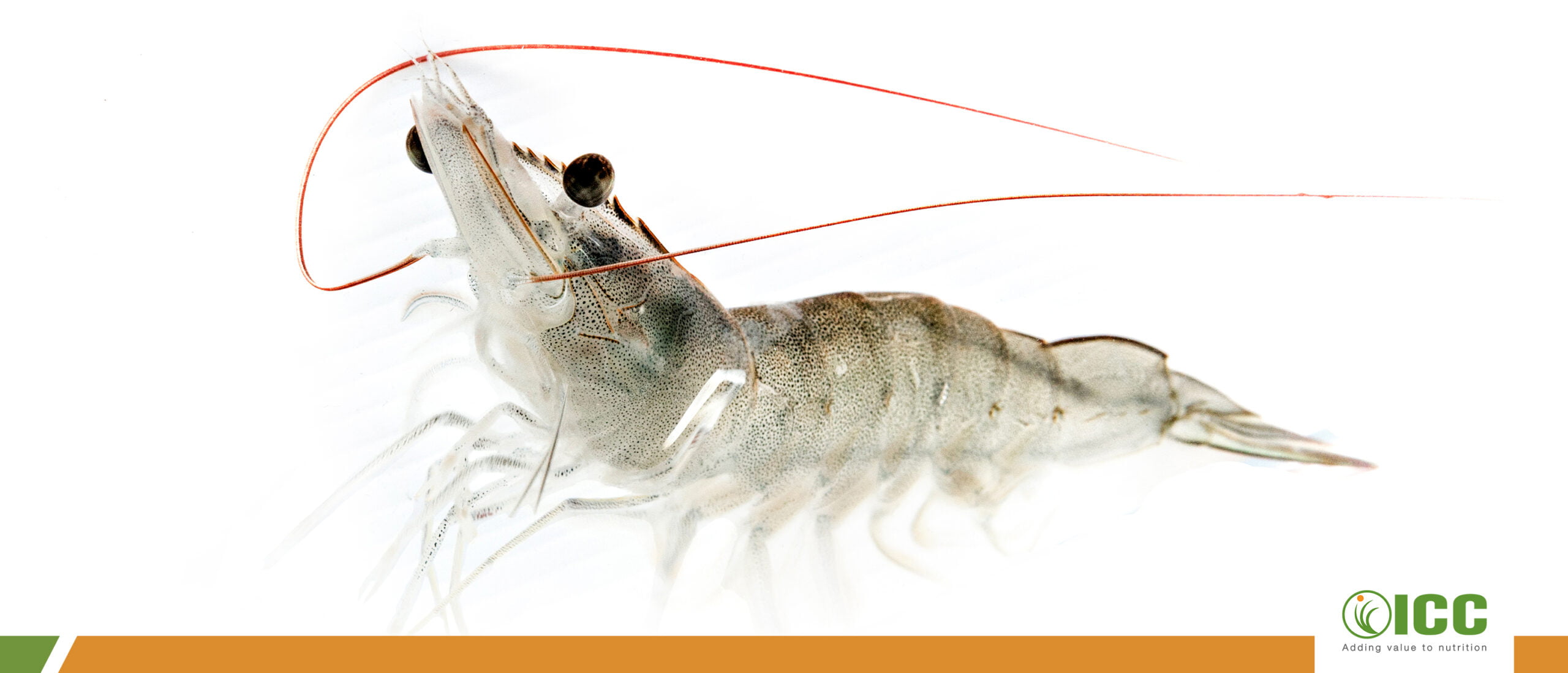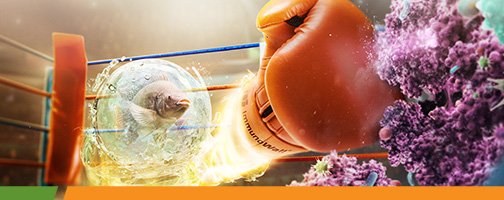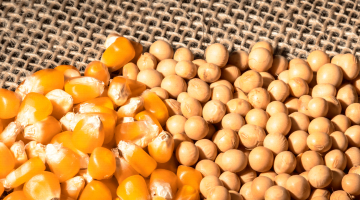β-glucans: Innate immune system response of shrimp and fish
For several years, the most common method to treat bacterial infections in aquaculture was the use of antibiotics. However, aquaculture has been facing serious issues due to several side effects from these drugs, such as build-up on tissues and resistance on environmental microbial flora. On the other hand, using an antibiotic or a vaccine for fish is expensive, and many breeding facilities do not have access to these options (Yousefian and Amiri, 2009). However, the use of substances or nutrients incorporated in the feed to improve survival rate, disease resistance and the growth of fish and shrimp has been increasingly and successfully effective.
Just like mammals, fish have innate and adaptive immune systems. The innate immunity is responsible for primary responses, which are fast but not specific, and with no memory against recontamination, and the adaptive immunity is responsible for specific responses which, in other words, are intense responses with pathogen-specific antibodies. Shrimp, however, are entirely dependent on a non-specific immune mechanism that resists infections (Hertrampf and Mishra, 2006).
The most widely known cells of the innate immune system are macrophages, neutrophils, dendritic cells, and natural killer cells (Sharma, 2003). Toll-like receptors, located on the surface of immune cells, recognize microbial patterns, and induce an immediate innate immune response. Following this activation and phagocytosis, the phagocyte presents a processed fragment of the pathogen to the adaptive immune system and stimulates an anti-pathogenic response. Thus, phagocytes are called antigen-presenting cells. Once the innate immune system recognizes pathogens, it triggers immediate innate defenses and activates the adaptive immune response (Lee and Iwasaki, 2007).
ICC Brazil’s ImmunoWall® is composed of a dense cell wall of Saccharomyces cerevisiae yeast, derived from the sugarcane fermentation process for ethanol production, and contains around 35% of β-glucans and 20% mannan oligosaccharides (MOS). β-glucans are known as modulators or stimulants of the immune system because, when in contact with phagocytes, they allow them to recognize the binding of β-1,3 and 1,6 (Petravic-Tominac et al., 2010); then, specific cytokines that initiate a chain reaction to induce immunomodulation and improve the innate immune system response are stimulated and produced by these phagocytes.
This type of response is crucial for animals in early growth, reproductive phase, periods of stress, and during environmental challenges by acting as a prophylactic agent to increase disease resistance and minimize subsequent damages (such as reduced performance and higher mortality rates).
ImmunoWall® also contains MOS, known for its ability to agglutinate pathogens with type 1 fimbriae, such as several gram-negative strains. MOS provides a bonding place for pathogens to prevent colonization in the intestinal epithelium, and such bacteria are agglutinated and excreted together with the indigestible part of the fiber and other fecal substances.
Several studies have been published about the benefits of ImmunoWall® supplementation in aquaculture. Ebrahimi et al. (2011), while studying fingerlings of common-carp (Cyprinus carpio) infected with Aeromonas hydrophila found a significant increase in leukocyte numbers in survival rates and improved results in the feed conversion ratio in groups fed with ImmunoWall® (from 1 to 2.5%).
Ebrahimi (2010) reported a reduction in total gut bacterial counts and an increase in survival rate, as well as an improvement in the feed conversion ratio in Kutum Rutilus frisii fingerlings fed with ImmunoWall® (from 0.5 to 2.5%). Karimzadeh et al.(2013), while studying Rutilus kutumlarvae, found an improvement in survival rate, final body weight, and feed conversion ratio, as well as a reduction in total gut bacterial counts when supplemented with 0.5% ImmunoWall®.
Other research to prove the positive effects of ImmunoWall® in the production of shrimp have been conducted. Jintasataporn et al. (2016) demonstrated an improvement in survival rates of Litopenaeus vannamei infected with V. harveyi and in certain immunity parameters under disease challenging conditions caused by V. harveyi or V. parahaemolyticus (cause of Early Mortality Syndrome) fed with 1% ImmunoWall®. Another study conducted by Jintasataporn (2014 – unpublished data) also analyzed ImmunoWall® effects on the response of Litopenaeus vannamei infected with V. parahaemolyticus; the results showed an improvement in resistance to the disease caused by virulent bacteria (according to immunity parameters and survival rates), especially under high salinity conditions.
Enhancing and modulating the innate immune system might be one of the strategies to fight contamination, reduce mortality, and increase productivity. If diets with yeast cell walls are previously introduced to fish and shrimp, their immune system will be formulated and will be ready to fight any infection or contamination. The action of β-glucans on yeast occurs in the innate immune system which, in other words, is the first immune response to pathogen contamination, thus avoiding a higher energy expenditure to mobilize the adaptive immune system (fish) or decrease in production, or high mortality rates (fish and shrimp). We know that intensive animal production is an extremely challenging environment, thus strengthening the immune system may be one of the secrets to greater productivity.
References
Ebrahimi, G. (2010) Effects of prebiotic supplementation on survival, growth performance, and feed utilization of Kutum, Rutilus frisii (Kamenskii), fingerlings. Research Journal of Animal Science, 4 (6): 125-129.
Ebrahimi, G., Ouraji, H., Khalesi, M.K., Sudagar, M., Barari, A., Zarei Dangesaraki, M. and Jani Khalili, K.H. (2012) Effects of a prebiotic, Immunogen, on feed utilization, body composition, immunity and resistance to Aeromonas hydrophila infection in the common carp Cyprinus carpio (Linnaeus) fingerlings. Journal of Animal Physiology and Animal Nutrition, 96: 591-599.
Hertrampf, J.W., and Mishra, S.K. (2006). Benefits of nucleotides in shrimp farming. Feed tech. Vol. 10.9, pp. 27-30. www.AllAboutFeed.net
Jintasataporn, O., Bonato, M.A., Santos, G.D., and Hooge, D.M. (2016) Saccharomyces cerevisiae cell wall supplementation on growth performance and immunity status of white shrimp (Litopeneaus vannamei). Journal of Modern Agricultural Science and Technology. Accepted for publication.
Karimzadeh, S., Amirkolaie, A.K., Molla, A.E. (2013) Effects of Different Levels of Immunogen on Growth Performance, Intestinal Bacteria Colonization, and Survival Rate in Rutilus kutum Larvae. World Journal of Fish and Marine Sciences 5 (6): 664-669.
Lee, H. K., A. (2007) Iwasaki. Innate control of adaptive immunity: dendritic cells and beyond. Semin. Immunol., n. 19, p.48-55.
Posted in 04 June of 2019


